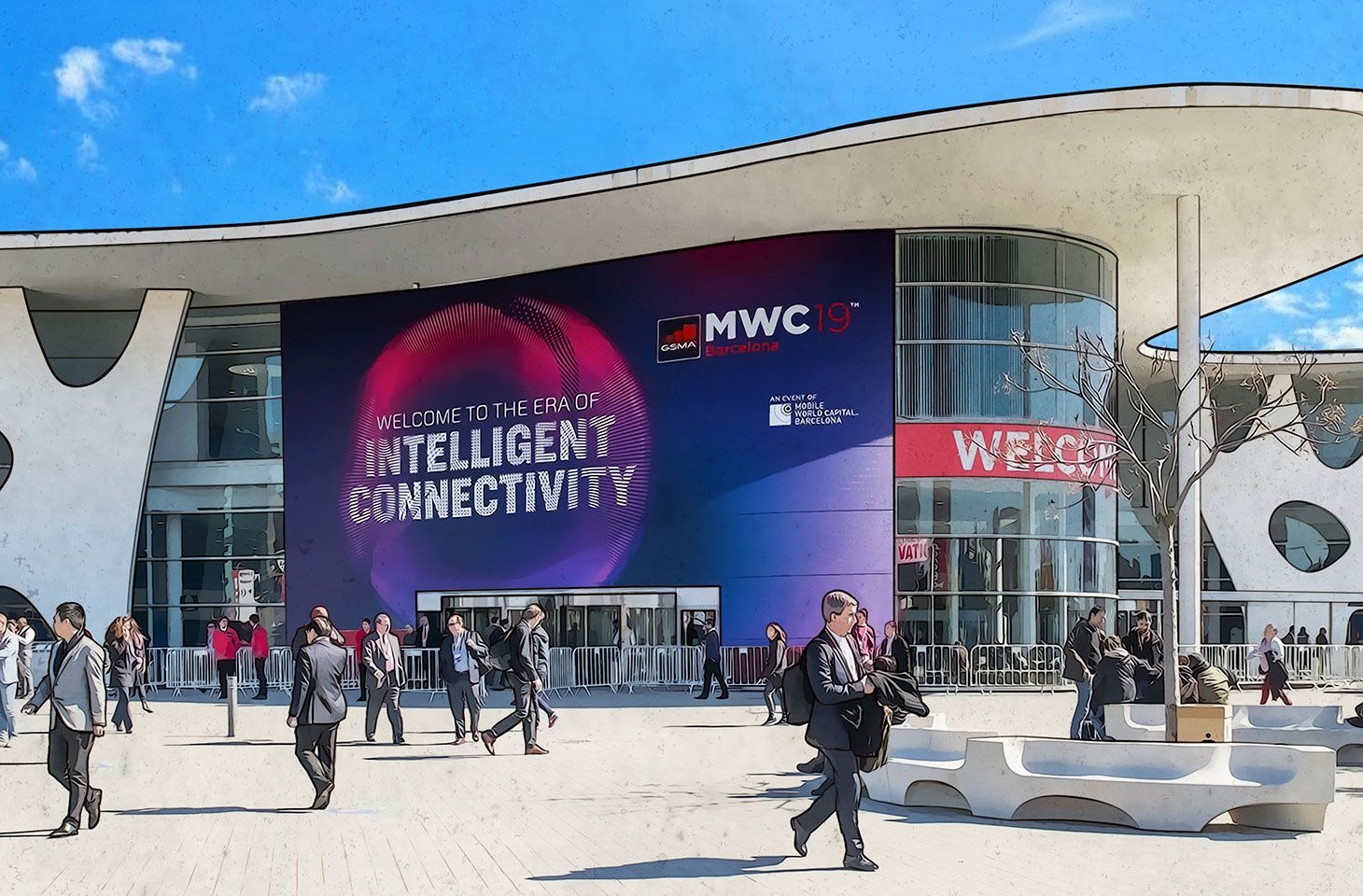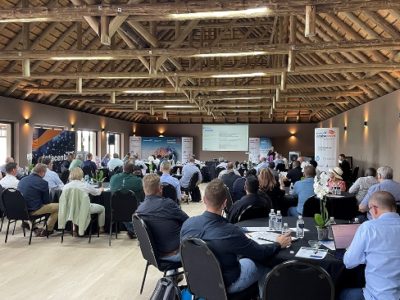I have attended the Mobile World Conference (MWC) for almost 25 years, interrupted only in the last two by Covid-19. I have attended as the mobile generations have increased from 2G to 5G. Year after year, Strand Consult has provided pre and post reviews of the event. Here’s the archive.
RELATED A Preview Of Mobile World Congress 2022 – Strand Consult
This year it was great to see 62,000 come back to Barcelona, and GSMA succeeded to maximize the feeling that many gathered in one place.
Director General of GSMA Mats Granryd opened the event with his keynote “New Tech Order” This theme has many interpretations: mobile operators deliver the foundation for modern society; governments providing digital services or surveilling citizens or the ever-growing power of Apple, Google, Netflix, Amazon and so on.
Granryd observed that by the end of 2021, over 180 5G networks had been launched in 70 countries; that 2021 mobile traffic grew by 40%; and that the industry has 5.3 billion customer relations, noting the gap of 3.7 billion unconnected people with 450 million living in areas without mobile coverage. He described the partnerships through which mobile operators deliver the foundation for the digital society and the prerequisites for the green transition. He noted that industry will invest over US$600 billion by 2025 and that 85 percent will be in 5G.
However impressive these accomplishments, Granryd did not mention the declining shareholder value of mobile operators. Since 1998, the only net value add from has been premium SMS to pay for ring tones, logos, Java games, and TV polls. While mobile data traffic may be up 40% last year, this does not translate into greater revenue for mobile operators. Simply put, mobile operators have increased output by 40% and reduced headcount but have less profitability today than a generation ago. It’s a bad story for shareholders. GSMA´s members may talk a big game about the future; it has failed to monetize it.
Russia, the elephant in the room
MWC started just after Russia invaded Ukraine. While there‘s a consensus that Russia’s actions are wrong, few realized just how brutal the invasion could be. 2022 is likely the last MWC that GSMA and its members can pretend to remain neutral geopolitically. Governments, consumers, and shareholders are forcing companies to choose sides.
The first keynote consisted of Mats Granryd from GSMA; Jose Maria Alvarez-Pallete, Chairman & CEO of Telefonica; Nick Read, CEO of Vodafone; Allison Kirkby, President & CEO of Telia Company; Yang Jie, Chairman of China Mobile; Ruiwen Ke, Chairman & CEO of China Telecom; and LieHong LIU, Chairman & CEO of China Unicom.
The first four speakers, all from democracies with freedom of speech, sharply distanced their companies from what Russia has done in Ukraine. However, none of the three speeches from China, mentioned the atrocities in Ukraine. It’s no surprise as Yang Jie, Ruiwen Ke, and LieHong LIU follow the party line. Chinese Secretary General President Xi aligns with Russian Prime Minister Putin on human rights and freedom of speech.
In the days following MWC, many US and European based companies like Microsoft, HP, Dell, Nokia and Ericsson withdrew Russia, a decision costing billions of dollars. Notably the tech companies closely aligned with the Chinese government like Huawei and Lenovo have stayed. They may be helping Putin surveille the population in Russia and Ukraine.
When it emerged that Huawei, unlike its competitors, chose to stay in Russia and not condemn what is happening in Ukraine, the two remaining Britons on Huawei UK’s board of directors Sir Andrew Cahn and Sir Ken Olisa stepped down.
It comes after Sir Mike Rake, the former chairman of BT Group, stepped down as chairman of Huawei’s UK operation in 2021 before the UK government banned the company from the country’s 5G networks and after Lord John Browne of Madingley, the former BP chief, stepped down as UK chairman of Huawei Technologies in 2020.
It also comes after Tommy Zwicky, Vice President of Communications at Huawei Denmark, left the company in December 2019, saying he could not defend Huawei’s role in Uighur Alarm project.
Increasingly, working for Huawei is not a resume-builder; it’s a liability. But many still can work with blinders on. They can set aside their democratic values and go to work for or buy the products of Huawei, a Chinese government company which enables repression and autocracy with its technology. Consider the President of Cyprus, a European country, in which almost all its 5G infrastructure is from Huawei.
With more than 60% of its 4G infrastructure in Europe coming from Huawei, Vodafone is probably Huawei’s biggest customer outside of China. Neither CEO Nick Read nor his board can guarantee that the safety of their customers from the Chinese government. Nick Read may have condemned Russia’s invasion of Ukraine; Huawei likely doesn’t care as long as he keeps buying. He’s a man who says the right things but has a hard time delivering. Just ask his shareholders.
The Russian connections will likely grow increasingly difficult for GSMA. Consider its board members Vyacheslav Nikolaev, President & CEO and Chairman of MTS and Kaan Terzioğlu Group CEO of VEON (which owns Kivstar in Ukraine). The largest shareholder in VEON is LetterOne which in turn is controlled by Russian oligarch Mikhail Fridman. Fridman, lives in the UK, has an allowance of £2,500 pounds ($3,300) per month, and must get approval from British government for his spending. Life it tough now for the oligarchs and their families who must trade Swiss ski trip and Riviera beach excursions for tours of the Gazprom Mountain-Tourist Centre and Crimea.
GSMA’s statement on the invasion of Ukraine makes no mention of Russia. This may be to placate the three board members from Chinese operators and the two from Russia. Such a tepid statement won’t likely cut it in future. Scores of companies and people have stood up to Putin and Russia on a scale never seen before.
Indeed many telecom operators are taking it a step further with free data and SIM cards for Ukrainian refugees. They also offer free calls to and from Ukraine and no roaming. With 53 million mobile subscriptions and millions already having fled the country, mobile operators make a significant contribution to support Ukraine. Let’s hope that BEREC and Ukrainian regulators can work out an arrangement such that termination rates don’t explode. The invasion makes its difficult and costly to deliver communications to the country. It is not a problem for those who use WhatsApp and Facetime vice versa so there are still many people in Ukraine who only have a 2G or a 3G phone and for them it is a problem if the family has to call them from abroad.
Danish startup MiWire has donated more than 70 all weather, outdoor 4G Wi-Fi Hotspots to Ukraine. The deployment is coordinated with the Ukraine operator Kyivstar and the Ministry of Digital Transformation. Early in the process MiWire got an official letter of request from the Ukrainian deputy Prime Minister Mykhailo Fedorov for the delivery of more WiFi Hotspots to connect people on the ground with family and friends and the world around.
Strand Consult sympathizes with the many Russians who do not support what is happening right now. These Russians also experience their rights obliterated. They feel powerless against a megalomanic leader who, to top it off, has some of the world’s most expensive clothes. In a single stroke, Putin has reversed decades of progress in Russia, and its people will suffer for years to come.
The 12 Key Finding Mobile World Congress 2022.
Here are some of the important messages from MWC 2022:
- 5G is the cellular technology that has been rolled out and adopted the fastest of any network yet. Some 200 5G networks are live in over 70 countries, but the business case for 5G is still to be determined, though home broadband and cord cutting are significant in USA. In general, operators are better at talking about the technology than creating value for shareholders.
- The was much talk about “The Cloud”, bolstered by a barrage of AWS advertising. The Cloud is shaping up to be for 5G what Apps and App stores and Apps were for 4G and smartphones: the revenue winners. Operators earned no money from smartphones or apps, and they won’t earn a penny from “the cloud”. Again we will see Big Tech as the market winners, not mobile operators. The cloud market is dominated by Amazon – AWS, Microsoft Azure and Google Cloud in the US and Europe but in Latin America and Africa, it’s another story. Huawei is on the rise. Few understand that data portability is difficult, if not impossible, with clouds. Unless you are merely storing data, try moving data AWS to Azure. Once clients start using cloud APIs and AI, they are locked in like a junkie buying junk on Amazon with Jeff Bezos as the pusher. Most associate Amazon with its founder Jeff Bezos, but the more likely here is AWS CEO Adam Selipsky is the man who generates by far the largest part of Amazon’s profits, also featured at MWC. That’s how AWS makes up 18.4% of Amazon’s revenue and 74.5% of total operating income, compared to 59.1% during the same period in 2020. Right now, AWS is growing at about 40% a year, a growth that can be measured by AWS revenue and earnings. The providers of Cloud based solutions have a pay as you grow model. It is not the best model in a world in which mobile operators are experiencing 40% growth in data traffic and where there is no growth in ARPU and profitability. The many clouds and the increasing cloud traffic can easily look like a bomb under the business models that mobile operators have today. This means that the cloud business will grow and make money while mobile operators will grow in traffic but earn less in revenue. Strand Consult’s report Middle Mile Economics: How streaming video entertainment undermines the business model of broadband describes how video streaming entertainment has negatively impacted many broadband providers, particularly those in rural areas which can’t recover costs in the middle mile. One problem is that traffic settlement conventions emerged before video streaming, and now broadband operators must seek fair cost recovery against global streaming giants. The case with Netflix in South Korea is one to watch.
- Private networks was another buzzword at MWC. For the many who think that companies will pay significantly more for that infrastructure just because it’s based on 5G, think again. There is already a private network market, and 5G operators face stiff competition from other technologies. You can ask yourself if a production company will outsource their critical infrastructure to a telecommunications company that often outsourced their IT infrastructure and networks to third-party actors. There are a lot of private network vendors from the big ones (Huawei, Ericsson, Nokia and ZTE) to those in between the layer like Cisco and then down to small players that we’ve never heard of. On top of that, you have AWS that bets on providing “private networks in a box” and pricing it as a software as a service solution. When the telecommunications industry describes the telecommunications industry, it is a chart with the telecommunications companies at the top with customers and suppliers below. When AWS describes the industry, it is with AWS at the top and the telecommunications companies below. From what we heard at MWC, we find it hard to believe that private networks will positively impact mobile phone companies’ revenue and earnings. We believe that in the same way that smartphone manufacturers and app stores took 4G cake, cloud vendors will consume 5G revenues.
- Nick Read had great expectations for Vodafone’s IOT platform, “already” have 142 million IOT devices. If you look at how many devices there are on the web, Vodafone’s market share is vanishingly small. That said, it would be interesting to know what the average ARPU is on these devices. Our experience is that we are talking about such small amounts that they are difficult to measure and seen from the outside, Vodafone’s IOT venture is one of the smaller in this industry.
- There is no doubt that 5G will be exciting territory when the next releases of 5G come on the market. There were many who talked about the 5G ecosystem and how it will evolve. It is clear that many operators believe that they should have a central role in the upcoming 5G ecosystem and that they are the ones who will manage it. The big question to ask yourself is what will be easier to implement in practice. To build a new ecosystem that operators want or for Google, Apple and AWS to add 5G on top of the ecosystems that they operate and make a lot of money from today? I think the operators are going to lose that battle as well.
- Vendor diversity is the big thing, making oneself less dependent on countries like China and large suppliers. It is a complex debate. Given the supply shocks experienced from the Russian invasion of Ukraine, this is likely to accelerate supply chain diversification efforts vis-à-vis China. There wasn’t much focus on vendor diversity across the supply chain in Barcelona. What was most focused on was vendor diversity in relation to the RAN and that despite the RAN costs making up about 3% of the mobile operators’ ARPU.
- I had the pleasure once again to be judge in the Global Mobile Awards. I would like to see higher levels of innovation. Too few participate in these award and the entrants don’t seem a fair reflection of how innovative the world is.
- Startup unnovation, on the other hand, was the part of the fair called 4YFN There were lots of small but inspiring and impressive exhibitors. The big operators use PowerPoints when they talk about the future. At 4YFY, the solutions are demonstrated with combination of new technology and telecommunications networks. Telemedicine is a standout, as is the investment coming from the French government. The Nordic countries have been innovating in this domain for years and are ahead of France.
- Diversity displaced women as a conference theme. The minority themes used to be at the end of the conference, now they start at the beginning. However GSMA has moved on to “Diversity” as if they have achieved their goals with women. Even today, just 3 women out of 26 are GSMA board members. I am skeptical that GSMA has the skills to become more diverse and to get more women on its board.
- There was a lot of green, or rather, greenwashing. The fact is that the massive network expansion means that the companies will use more energy even with more energy efficient equipment. At MWC this year, several operators shifted their focus away from their own energy consumption and onto the central role of their infrastructure for the green transition. That is a step in the right direction.
- One of two celebrities was Joan Laporta President of FC Barcelona, $1.57 billion in debt, who released Lionel Messi because the contract could not be honored. Joan Laporta came and told how his club looked to the future. It is impressive that the mobile phone companies are looking for inspiration from a man who runs a football club that is in trouble to the neck. The other celebrity was Jim McKelvey Co-founder & Director of Block (Square) who portrayed himself as a man who fights for the poor and wears second-hand clothes. McKelvey is one of the many tech industry billionaires, a Champagne socialist who lives in United States with personal security in a $5 million, 2-bedroom apartment bought in 2018, amongst other properties.
- My takeaway is that telecommunications is becoming more like the utilities industry in which sell metered service to commodities like water and electricity, while others monetize these inputs. Unlike mobile operators, utilities don’t reinvent their technology every 5 years. It’s like the telecom industry sells tap water at low price while its competitors add bubbles to pretty bottles with labels that say Perrier, Evian or Pellegrino and get significantly more margin for their product.
Everyone talks about OpenRAN; no one buys it.
GSMA worked hard to put focus on OpenRAN, but industry still grapples with the big challenge that OpenRAN is something operators test and talk about but not something operators buy. If you attended the OpenRAN events at MWC, it was “The Usual Suspects” who reused the arguments they have used for the past two years. We’re talking about people who referred to testing agreements with operators as commercial agreements. When you hear smaller players like Mavenir and Parallel Wireless, it is clear that they are panicking that they are not getting the orders that they have probably promised their boards. It is very easy to see through a salesperson who has difficulty achieving the sales results that are expected of him.
After some years, OpenRAN has yet to notch a major commercial success. If OpenRAN gets the growth its proponents predict, it will account for less than 1 percent of the 5G mobile sites in 2025; not more than 3 percent in 2030 (installed base). It looks like OpenRAN is too little, too late to make a difference in a world in which operators are deploy 10,000 classic 5G sites every month. Note that the RAN cost of an average mobile operator is equivalent to about 3% of their ARPU. In practice, this means that if a US operator sent all the savings to the customers, then an average American mobile customer could save 40 cents a month.
Many OpenRAN proponents and policymakers claim that there are just 4 infrastructure suppliers to mobile networks, as if Huawei, Ericsson, Nokia, and ZTE were the only choices for equipment. Maybe these people can’t count or they have never walked around the MWC exhibition halls where there are some 2000 infrastructure providers. It’s as if those who know the least about the industry talk the most about OpenRAN.
Rakuten charismatic CEO Tareq Amin and its Symfony solution got attention. Rakuten may have a large symphony orchestra, they have a hard time selling tickets to their concerts. If you look at their ability to attract customers in Japan then it is a commercial disaster and their best-selling point for data has been free telephony for up to 12 months.
When Johan Wibergh from Vodafone says they want OpenRAN on 30% of their sites by 2030, the math doesn’t work unless they slow down their 5G rollout. Globally some 200 5G networks have been launched in over 70 countries and classic 5G are moving fast.
OpenRAN players could have opened the conversation by addressing the many unanswered questions from Strand Consult and others, including the financial, economic, technical, and practical points about the technology. This is particularly evident at many OpenRAN webinars over the last 24 months when Strand Consult posts its questions publicly in the chat and the moderator ignores the questions, or Strand Consult’s emailed questions to the event organizer are ignored.
As GSMA is unwilling to facilitate these discussions, check out IEEE’s event tomorrow OpenRAN and Private 5G – New Opportunities and Challenges It is probably the first OpenRAN event to relate objectively to the roadmap that is ahead of OpenRAN. Unlike the many other free OpenRAN events that are held, this event is not sponsored by OpenRAN players and unlike the other events, it is not purged of critical questions.
A highlight of the OpenRAN part was the event Security Summit: 5G Network Diversification and Supply Chain Security.
It featured former Federal Communications Commission Chair Tom Wheeler who asked about vendor diversity only being about RAN or whether to look at other parts of the value chain as well, including the number and size of cloud vendors including on AWS.
At the same event Ian Levy, Technical Director, of the UK’s National Cyber Security Centre who sat seriously among 2,000 exhibitors and said there were only 4 infrastructure providers in the mobile market. How should the other 1996 exhibitors feel when government official use industry talking points for their security policy. Certainly citizens should not feel safe when the security officials cannot correctly separate real world threats from advocacy.
From the US was Jaisha Wray of National Telecommunications Information Administration. Her job is to peddle OpenRAN to other countries. It’s doesn’t seem like the sales effort is working, but Huawei is gaining ground in her territory. To learn more read the CSIS report Huawei’s Global Cloud Strategy Economic and Strategic Implications and other similar studies documenting Huawei’s rise. Strand Consult’s Peru-born associate Silvia Elaluf-Calderwood describes Huawei’s rise in cloud, the fastest in LATAM in fact, and its threats to US and EU security and human rights. See in English
































